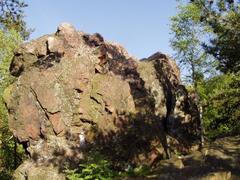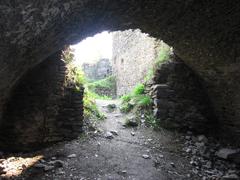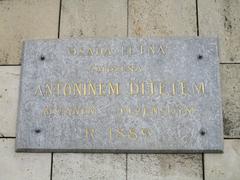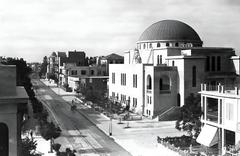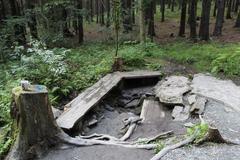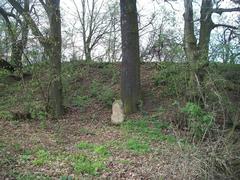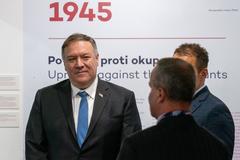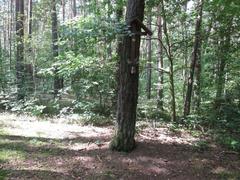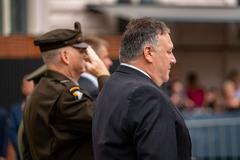Měšťanská Beseda Plzeň: Visiting Hours, Ticket Information, and Historical Guide
Date: 04/07/2025
Introduction
Měšťanská Beseda, located in the heart of Plzeň, is a symbol of the city’s cultural heritage and architectural grandeur. Completed in 1901 and designed in Neo-Renaissance style with Art Nouveau embellishments, the building has played a vital role in Plzeň’s social, cultural, and political life. This guide provides a comprehensive overview of Měšťanská Beseda’s history, architectural highlights, visitor information, and its ongoing significance as a premier cultural venue (wikiwand, myCityHunt, Visit Plzeň, plzen.eu).
Historical Overview
Foundation and Civic Purpose
Established by the Měšťanská beseda association in 1862, the idea for a dedicated cultural center emerged as the association’s activities expanded. In 1898, an architectural competition led to the selection of Alois Čenský’s Neo-Renaissance design, enriched with Art Nouveau motifs. Construction began in 1900, with the building opening to the public in 1901. Its inscription “Plzeň sobě” (“For Pilsen, by Pilsen”) above the Great Hall stage reflects the civic pride that inspired its creation (wikiwand, Visit Plzeň).
Key Historical Moments
- 1918: Hosted meetings by the National Committee during the declaration of Czechoslovak independence.
- World War II: Used for registration of men conscripted for forced labor.
- Postwar Years: Nationalized after the Communist coup in 1948, with extensive but insensitive renovations in the 1950s.
- 1994–2004: Declared a cultural monument and underwent award-winning restoration, returning its interiors and exteriors to their original splendor (plzen.eu).
Architectural and Artistic Significance
Měšťanská Beseda is a masterpiece of late 19th and early 20th-century Czech civic architecture, harmonizing Neo-Renaissance structure with vivid Art Nouveau details:
- Façade: Symmetrical, with a central risalit, onion-shaped roof, and allegorical sculptures (notably “Unity and Nobility” by Antonín Popp). Inscriptions of Czech luminaries such as Palacký and Smetana emphasize national identity (myCityHunt).
- Interior: The entrance corridor features pilasters and stucco masks of local women, original ceramic tiles, and commemorative plaques. The Grand Hall displays a ceiling painting by Viktor Oliva, period chandeliers, and exceptional acoustics, making it ideal for concerts and balls. Other spaces include the Mirror Hall, Mayor’s Lounge, and a restored Art Nouveau café (Visit Plzeň).
Restoration and Modern Revival
After decades of decline, the building’s restoration (1994–2004) carefully revived its historical features under guidance from heritage authorities. The project won the “Building of the Year 2005” award for its sensitive preservation and adaptive modernization, enabling Měšťanská Beseda to function as a contemporary cultural hub while honoring its architectural and historical legacy (wikiwand, plzen.eu).
Visiting Information
Opening Hours
- Tuesday–Friday: 10:00 AM – 6:00 PM
- Saturday–Sunday: 10:00 AM – 8:00 PM
- Closed on Mondays and public holidays
- Note: Some services (café and restaurant “1901”) may operate with extended hours; always check the official website or event calendar for updates.
Tickets and Admission
- General admission: Free for building access and exhibitions.
- Special Events: Concerts, theatre, and guided tours require tickets. Book online (Divadlo.net), via the official website, or at the box office.
- Discounts: Available for students, seniors, and groups; guided tours may have separate fees.
Accessibility
- Wheelchair accessible: Ramps, elevators, and accessible restrooms throughout the building.
- Assistance: Can be arranged for visitors with special needs.
Amenities
- Cloakroom and Café: On-site café/bar offers refreshments during events.
- Multilingual Staff: Assistance for international visitors; select events may offer English programs.
Cultural Programming and Notable Events
Měšťanská Beseda is renowned for its diverse calendar:
- Music and Theatre: Hosts the Smetana Days festival, classical concerts, theatre performances, and live transmissions from major opera houses (mzv.gov.cz).
- Balls and Galas: Formal social events, especially during winter and holidays.
- Film Screenings: Kino Beseda screens art films and festival selections.
- Educational Events: Lectures, workshops, and seminars in collaboration with local institutions.
- Art Exhibitions: Regular displays of local and regional artists.
- Community Programs: Family-friendly workshops, holiday celebrations, and open days.
Check the event program for the latest schedule.
Location and Getting There
- Address: Kopeckého sady, city center, Plzeň.
- Public Transport: Tram lines 1, 2, 4 and several city buses stop nearby.
- Parking: Available in adjacent city garages; public transport is recommended due to central location.
Nearby Attractions
- Pilsner Urquell Brewery: Legendary birthplace of Pilsner beer.
- St. Bartholomew’s Cathedral: Features the tallest church tower in the Czech Republic.
- Plzeň Historical Underground: Network of medieval tunnels beneath the city.
- Great Synagogue: One of Europe’s largest synagogues.
Frequently Asked Questions (FAQ)
Q: What are the main visiting hours?
A: Tuesday–Friday: 10:00 AM–6:00 PM; Saturday–Sunday: 10:00 AM–8:00 PM; closed Mondays.
Q: Is there an entrance fee?
A: General building entry is free. Certain events and guided tours require tickets.
Q: Are guided tours available?
A: Yes, book in advance via the official website or tourist information center.
Q: Is the venue accessible for people with disabilities?
A: Yes, all public areas are wheelchair accessible.
Q: Where can I buy event tickets?
A: Online (official website, Divadlo.net), or at the box office.
Q: Are there dining options on-site?
A: Yes, the Art Nouveau café and restaurant “1901” offer refreshments and meals.
Visitor Tips
- Photography: Permitted in public spaces; flash may be restricted during performances.
- Plan Ahead: Check the event calendar before your visit for special programming and ticketed events.
- Guided Tours: Enhance your experience by booking a tour, especially during festivals.
- Combine Sites: Měšťanská Beseda’s central location makes it easy to combine with other Plzeň historical landmarks.
Conclusion
Měšťanská Beseda is more than a historic building—it’s a living monument where Plzeň’s cultural, social, and architectural traditions converge. Its meticulously restored halls, dynamic event programming, and commitment to accessibility make it an essential destination for anyone exploring the Czech Republic’s rich heritage. For up-to-date information on hours, tickets, and events, visit the official websites, download the Audiala app, and follow Měšťanská Beseda on social media.
